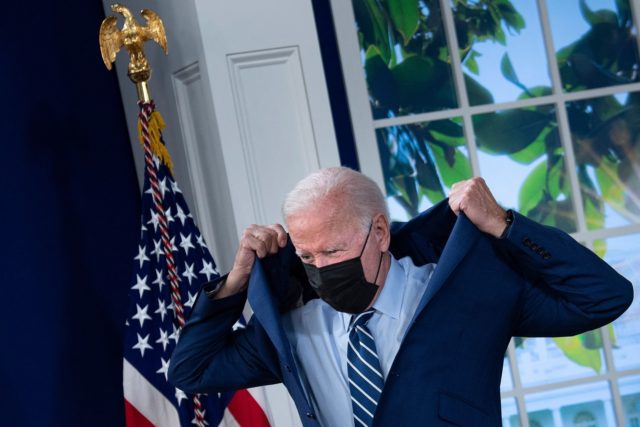Inflation makes it harder to read the economy.
The Census Bureau reported Monday that orders for durable goods rose by more than expected in August. Economists had forecast that orders would rise 0.6 percent compared with last month. Instead, they rose 1.8 percent to a record seasonally adjusted $263.5 billion.
Much of the gain in durable goods—products made to last three years or longer—was due to a rise in aircraft orders. This is an extremely volatile category because the price tags of airplanes are so large. And the business has been buffeted by the pandemic over the past 18 months, as travel has lurched from off to on and off again. In August, non-defense aircraft orders jumped 77.9 percent to $16.3 billion.
Economists view a sub-category of durable goods orders that strips out defense spending and aircraft as a good proxy for business investment. These so-called core capital goods orders rose 0.5 percent compared with a month earlier. The July figure was revised up from zilch to 0.3 percent growth.
At first glance, this seems to be a sign of economic resilience in the face of the Delta variant, which was running rampant in August. And in most cases, businesses ordering more goods is a sign that they are optimistic about the coming months.
Inflation, however, scrambles those signals.
The durable goods orders figures from the Census Bureau are nominal, meaning they are not adjusted for inflation. If prices accelerate faster than orders, what looks like an expansion in economic output might really be a flatline or even a contraction.
The Producer Price Index (PPI), which measures inflation from the point of view of businesses rather than consumers, rose 0.7 percent in August. The PPI figure for goods rose one percent. The various indexes that measure the prices received for capital equipment sold by U.S. producers to businesses and government rose 0.5 percent. The index for final demand durable goods rose 0.7 percent.
In other words, when measured against inflation, it appears as if durable goods orders either stagnated or contracted in August. We paid more but probably ordered fewer durable goods.
There’s also evidence that supply-chain disruptions and labor shortages are weighing on economic output. Year to date, orders for durable goods are up 24.7 percent compared with the first eight months of last year. Shipments, however, are up just 14.1 percent. And shipments declined in August, falling 0.5 percent. That indicates a bottle neck.

The inflation data backs this up. The Producer Price Index for materials for durable goods rose 1.8 percent in August and is up a staggering 53 percent compared with a year ago. The index for components rose 1 percent in August and is up seven percent compared with a year ago. The prices of goods for what the Labor Department categorizes as “stage four intermediate demand”—meaning the next to last stage in the process of getting goods to their end-users—rose 0.9 percent in August, and the prices of services rose 0.7 percent.
A lot of the commentary around the durable goods orders on Monday failed to take note of the fact that orders appear to have been flat or even underwater with inflation. That’s likely because we’ve just come off a decade-long period in which there was not much need to distinguish between nominal and inflation-adjusted gains, at least in the short term. But as long as inflation is still running hot, forgetting to adjust for rising prices will produce a lot of wrong-headed readings of the economy.


COMMENTS
Please let us know if you're having issues with commenting.